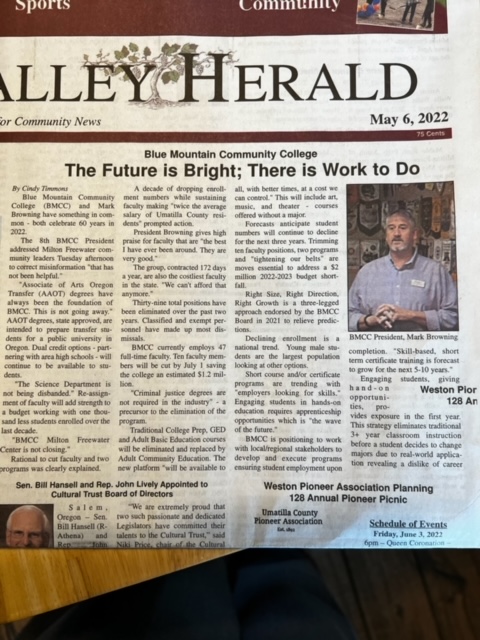Repeated misinformation and double standards from the administration raise concerns.
When the public advocacy pause went into place, this did not stop President Mark Browning from participating in a front page press release, or speaking out at the Rotary meeting in Pendleton the following day. This suggests there is only room for one narrative, and the rules of engagement only apply to others

Administration claims faculty are to blame for bringing this internal issue to the public, when in fact it was President Mark Browning who originally announced cuts in the media before any discussion occurred on campus. See: East Oregonian article from Feb 22. The irony of the kettle calling the pot black.
The administration has repeatedly told the public that BMCC faculty are the highest paid in the state. They cite IPEDS data, however, our independent analysis of that data told a much different picture. Our faculty are middle of the pack, average in expense. See Article: An Average Expense If they aren’t exaggerating for impact, this calls into question their ability to draw credible conclusions based on evidence.
In 2019, the BMCC board voted 6 to 1 to support the Chemistry Instructor as he navigated the green card process. See East Oregon Article. Kunapareddy was moved by this outcome and said he would repay this decision through his teaching. In March of 2022, the next phase of the process began, which requires the sponsoring institution to file an I-140 form. BMCC has not filed this form yet, despite this instructor still advocating for students and working to build the chemistry community on campus. This calls into question the value of this administration's word. Do they value integrity?
Furthermore, administrators appear to flip flop on issues and metrics as it suits them. For example, in one breathe they denounce overload (extra duties by faculty and seek to reduce faculty workloads), but when pressed for a solution to the 270 students who will lose their faculty adviser as a result of these layoffs, they say that other faculty will absorb these students as there is a mechanism to pay faculty for extra work through overload. So which is it? Is overload bad? Good? In another instance, they claimed they used enrollment data for individual courses to determine which instructors/departments were identified in the proposed cuts, yet some of those identified have the FULLEST classes on campus, while other courses had even smaller participants remained out of the cross hairs. If enrollment is the metric, the administration cannot pick and choose when to apply it.


